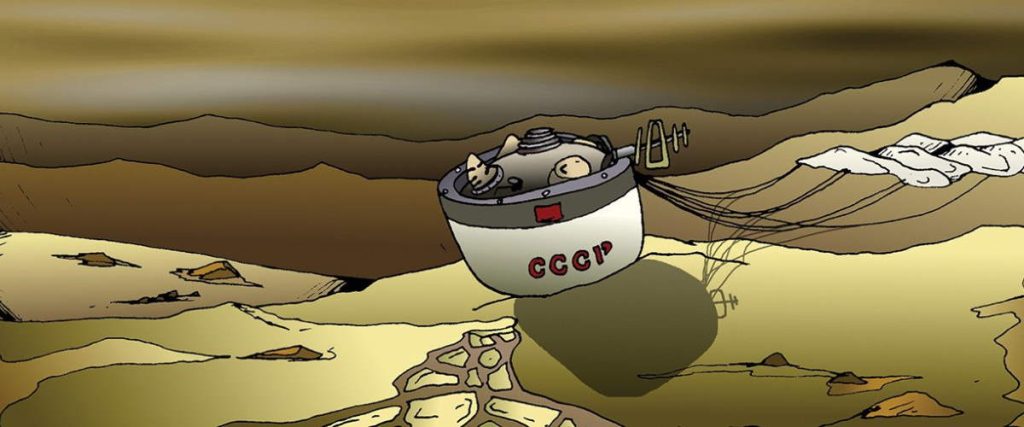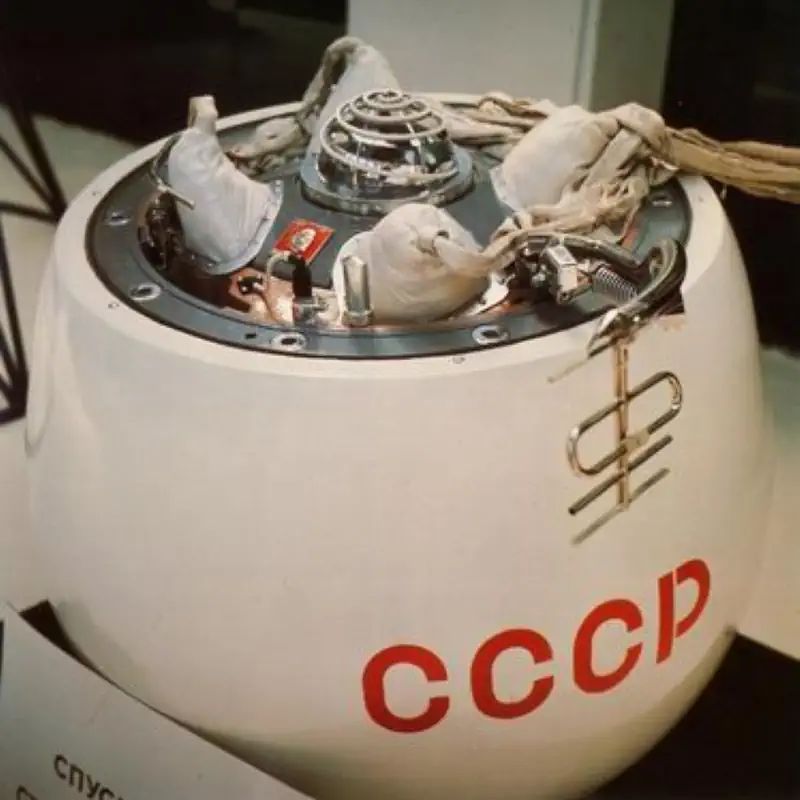On December 15, 1970, the Soviet Union’s Venera 7 spacecraft landed on Venus’ surface and became the first spacecraft to perform a soft landing on another planet. It also transmitted information to Earth for 53 minutes, 23 minutes of them from the Venusian surface, another first in the history of space exploration (the first data transmission from another planet).
These achievements made Venera 7 an important milestone in the exploration of space, as it demonstrated that it was possible for a spacecraft to survive the extreme conditions on the surface of Venus and transmit data back to Earth. It also provided valuable information about the Venusian atmosphere and surface conditions.
December 15 story of what happened this day in Science, Technology, Astronomy, and Space Exploration history.
Venera 7
Launched on August 17, 1970, Venera 7 was one of two identical uncrewed spacecraft launched to Venus by the Soviet Union during the August 1970 opportunity (every 583.92 days -the synodic period of Venus- a launch window occurs, during which nearly optimal paths can begin at Earth and arrive at Venus).
The other mission, Cosmos 359, failed to leave Earth orbit.
The objectives of the missions were:
- Returning data from the Venus atmosphere
- Making a landing on the surface
- Continuing to return data after landing.

Venera 7 was very similar in design to its predecessors, Venera 5 and 6, with a bus holding a spherical lander probe. The probe was designed to withstand higher pressures and temperatures, as well as the shock of landing, through the use of a single spherical shell with no seams, welds, or holes.
Titanium was used in the construction of the pressure vessel, and it was lined with shock-absorbing material. The result was a more massive probe, 490 kg (1080 lbs) (Venera 5 and 6 were 410 kg in weight – 903 lbs).
A small parachute (2.5 square meters) was used to slow down the probe during descent. The lander held a resistance thermometer and an aneroid barometer. The bus held a solar wind detector and a cosmic ray detector.

The first soft landing on another planet
After the launch, two mid-course corrections were performed (on October 2 and November 11). On December 15, 1970, the Venera 7 probe separated from the bus and entered the nightside atmosphere of Venus.
After the initial aerodynamic braking, the top hatch was blown and the parachute system was deployed at about 60 km (37 miles) altitude.
But, six minutes later, the parachute ripped, and then collapsed, leaving the probe to fall towards the surface for another 29 minutes.
Venera 7 impacted Venus’ surface at a speed of about 17 meters/sec (61 km/h or 38 mph) and then the signals weakened, reached full strength for about one second, and then seemingly ceased.

Venus’s surface is like hell
Later analysis of the recorded radio signals revealed that Venera 7 had survived the impact and continued transmitting a weak signal for another 23 minutes – becoming the first spacecraft to do so (transmitting data on the surface of another planet).
Scientists think that Venera 7 may have bounced upon impact and come to rest on its side, so the antenna was not pointed toward Earth.
The pressure sensor had failed during the descent, but the temperature sensor showed a steady reading of 475°C (887°F) at the surface. A pressure of 92 bar (92 times the pressure of the Earth’s atmosphere at sea level, or equal to the water pressure at an ocean depth of 900 meters/ 2,952 feet) with a wind of 2.5 meters/sec was extrapolated from other measurements.
Venera 7 was carrying no camera. The first photo from the surface of Venus (and, in general, from the surface of another planet) was taken by Venera 9 in 1975.
Sources
- Venera 7 on the NASA Space Science Data Coordinated Archive website
- Venera 7 on Wikipedia
- Missions to Venus on the Mental Landscape website
- Moon Landings: All-Time List [1966-2025] - February 2, 2025
- What Is Max-Q and Why Is It Important During Rocket Launches? - January 16, 2025
- Top 10 Tallest Rockets Ever Launched [2025 Update] - January 16, 2025
